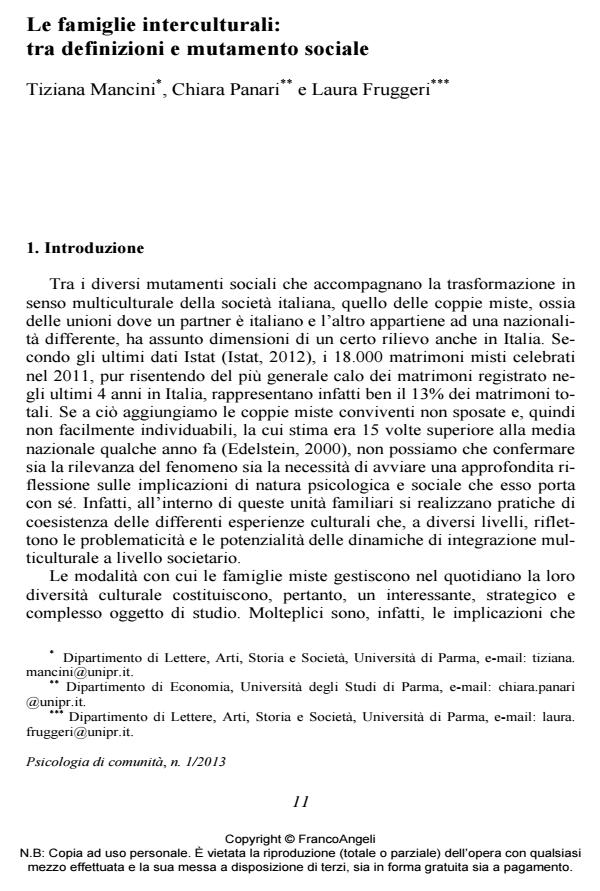Intercultural families between definitions and social change
Journal title PSICOLOGIA DI COMUNITA’
Author/s Tiziana Mancini, Chiara Panari, Laura Fruggeri
Publishing Year 2013 Issue 2013/1
Language Italian Pages 9 P. 11-19 File size 703 KB
DOI 10.3280/PSC2013-001002
DOI is like a bar code for intellectual property: to have more infomation
click here
Below, you can see the article first page
If you want to buy this article in PDF format, you can do it, following the instructions to buy download credits

FrancoAngeli is member of Publishers International Linking Association, Inc (PILA), a not-for-profit association which run the CrossRef service enabling links to and from online scholarly content.
The psychological analysis of the families where partner belong to different cultural groups needs to address some theoretical and methodological issues. The first one concerns the epistemological perspective used to study the concept of culture. The second refers to the definition of mixed or intercultural couple. The third question is related to the approaches adopted to analyse the influence of group identity on family processes. In this article we refer to the concept of culture not as independent from individuals but from within a system of psycho-social factors that contribute to develop the dynamics of these families, and we underline the relevant repercussions that this perspective has on the methodological approach.
Keywords: Intercultural families, cultural psychology, family dynamics.
Tiziana Mancini, Chiara Panari, Laura Fruggeri, Le famiglie interculturali: tra definizioni e mutamento sociale in "PSICOLOGIA DI COMUNITA’" 1/2013, pp 11-19, DOI: 10.3280/PSC2013-001002